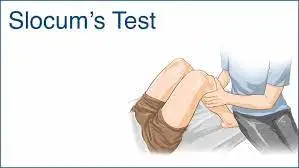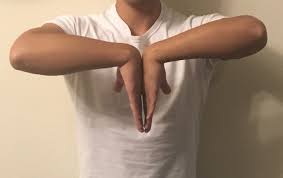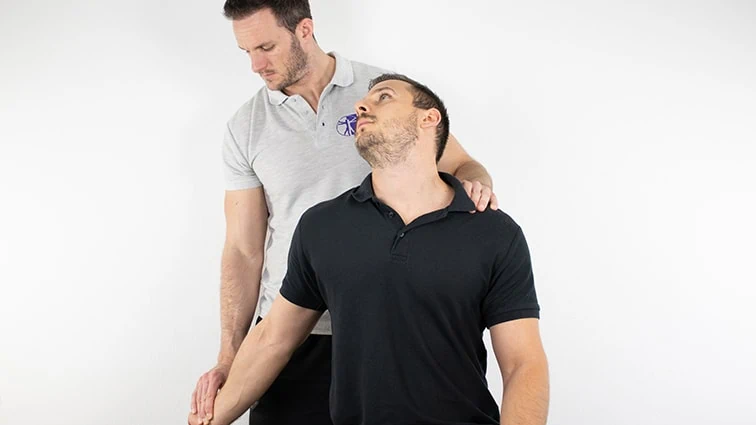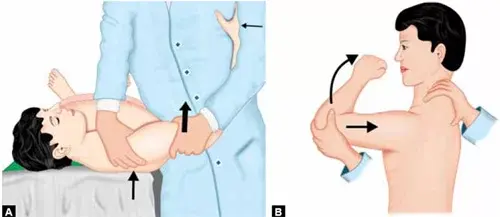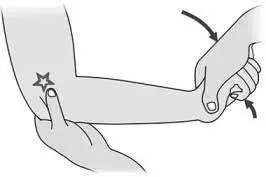Manual Muscle Testing of the Wrist
Manual muscle testing of the wrist is a technique used to assess the strength and function of the muscles surrounding the wrist joint. It involves applying resistance to specific movements of the wrist while the individual being tested tries to maintain or overcome that resistance. This assessment can help evaluate muscle strength, identify weaknesses or imbalances, and assist in diagnosing various conditions or injuries affecting the wrist.
Table of Contents
Wrist flexion
Testing muscles
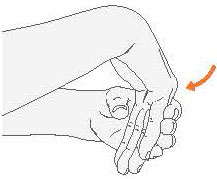
Flexor carpi radialis
Flexor carpi ulnaris
Patient’s position
For all grades of wrist flexion manual muscle testing, The patient should be positioned in a seated position with their arm resting on a table or other stable surface. His hand should be supinated.
Therapist’s position
The therapist should stand or sit in front of the patient for all grades of wrist flexion manual muscle testing. The therapist’s hand should be placed on the patient’s distal forearm, just above the wrist joint, to provide resistance during the test. For grades 3 and grade 4, the therapist’s other hand may be used to stabilize the patient’s arm or hand. For grade 5, the therapist may use both hands to provide strong resistance to the patient’s wrist or hand.
How to test?
The patient himself flexed the wrist through the range.
To check grades 4 to 5 give resistance with your palm in a direction.
Explain the test: Explain to the patient that you will be testing the strength of their wrist flexors by asking them to bend their wrist against resistance.
Stabilize the arm: Use your non-testing hand to stabilize the patient’s arm or hand, if necessary, to prevent any compensatory movements.
The patient himself flexed the wrist through the range.
To check grades 4 to 5 give resistance with your palm in a direction.
Apply resistance: Place your testing hand just above the patient’s wrist joint and ask them to flex their wrist against your resistance. Apply enough resistance to make the task challenging but not impossible.
Grade the strength: Use the grading scale to assess the patient’s strength.
- Grade 0: No contraction
- Grade 1: Flicker or trace of contraction
- Grade 2: Active movement with gravity eliminated
- Grade 3: Active movement against gravity
- Grade 4: Do the active movement against gravity and resistance
- Grade 5: Normal strength
Repeat if necessary: Repeat the test on the other side and/or repeat the test if needed to ensure accuracy.
Document the results: Document the grade of strength for each wrist flexor muscle tested in the patient’s medical record.
Wrist extension
Testing muscles
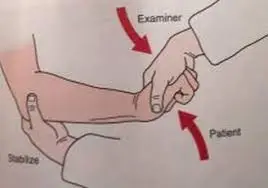
Extensors carpi radialis brevis
Extensors carpi radialis longus
Extensors carpi ulnaris
Patient’s position
The patient should be seated with their elbow flexed to 90 degrees and forearm resting on a table or armrest.
The wrist should be in a neutral position (neither flexed nor extended) for testing the wrist extensors.
The patient’s forearm should be prorated.
Therapist Position
- Grade 0:no movement occurs
- Grade 1: patient tries to do the movement.
- A flicker contraction present.
- Grade 2: The therapist should stand behind the patient and support the patient’s forearm with their hand while using their other hand to attempt to extend the patient’s wrist.
- Grade 3: The therapist should stand behind the patient and support the patient’s forearm with their hand while allowing the patient to complete a full range of motion in extending their wrist without any resistance.
- Grade 4: The therapist should stand behind the patient and support the patient’s forearm with their hand while using their other hand to provide resistance as the patient attempts to extend their wrist. The therapist should provide enough resistance to prevent the patient from completing the motion, but not enough to cause fatigue.
- Grade 5: The therapist should stand behind the patient and support the patient’s forearm with their hand while using their other hand to provide resistance as the patient attempts to extend their wrist. The therapist should provide enough resistance to prevent the patient from completing the motion, but not enough to cause fatigue. The therapist should also provide verbal cues to encourage the patient to complete the motion.
How to test?
Explain the procedure to the patient and obtain their permission.
Position the patient in a seated or standing position with their arm resting on a table or in their lap.
Ask the patient to extend their wrist by lifting their hand towards the ceiling. The patient himself does the extension of the wrist in range.
For grades 4 to 5 give resistance with the dorsal aspect of the hand in an opposite direction to extension.
Record the grade and document any observations or limitations in the patient’s ability to perform the test accurately.
Precautions
Ensure that the patient is comfortable and in a stable position before starting the test.
Avoid applying excessive resistance to prevent injury to the patient.
Be aware of any pain or discomfort the patient may experience during the test and stop if necessary.
Check for any contraindications or precautions before performing the test, such as recent surgery or injury to the wrist.
Use proper body mechanics and positioning to avoid strain or injury to yourself while performing the test.
Always follow proper infection control protocols, such as wearing gloves and sanitizing equipment, to prevent the spread of infection.


